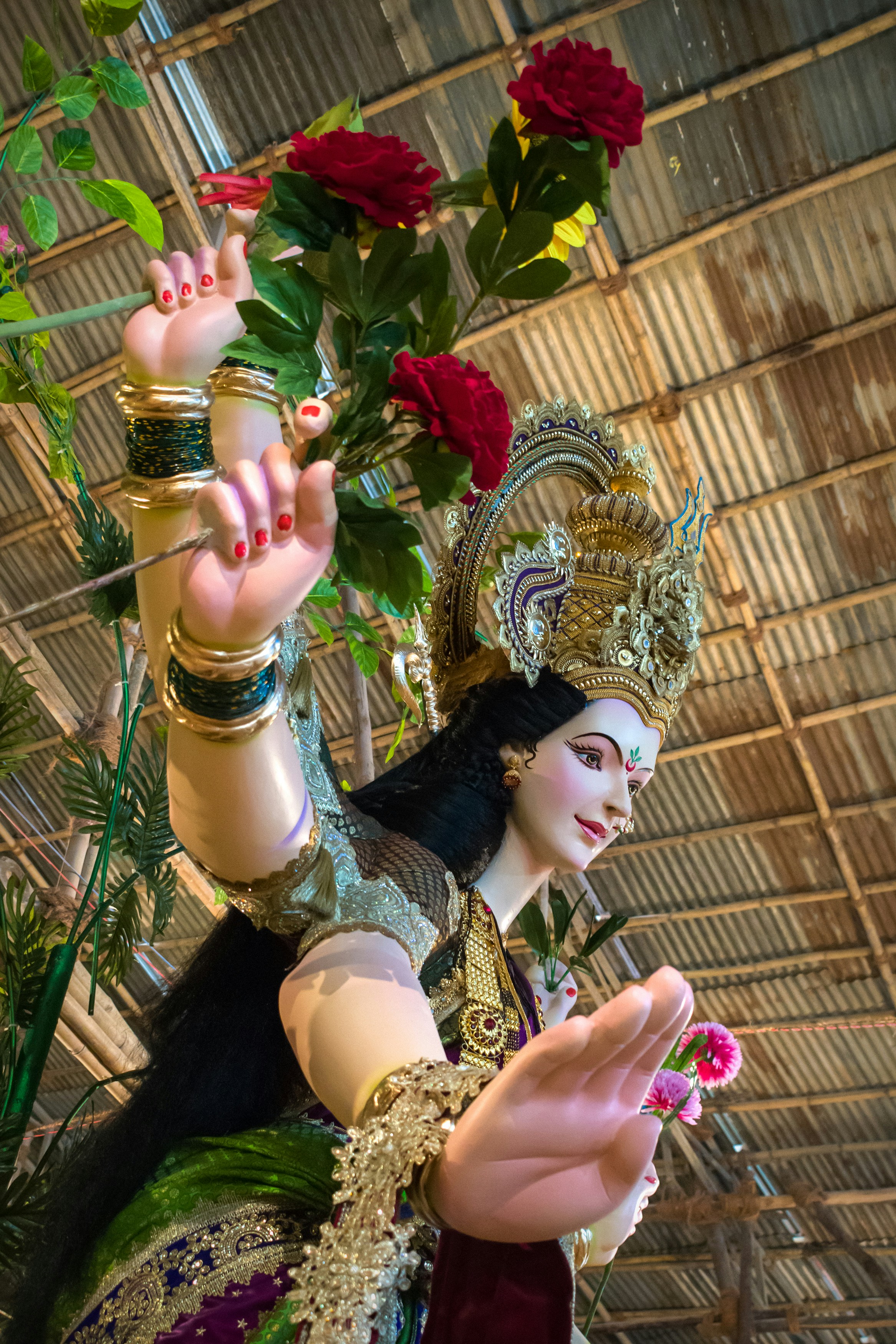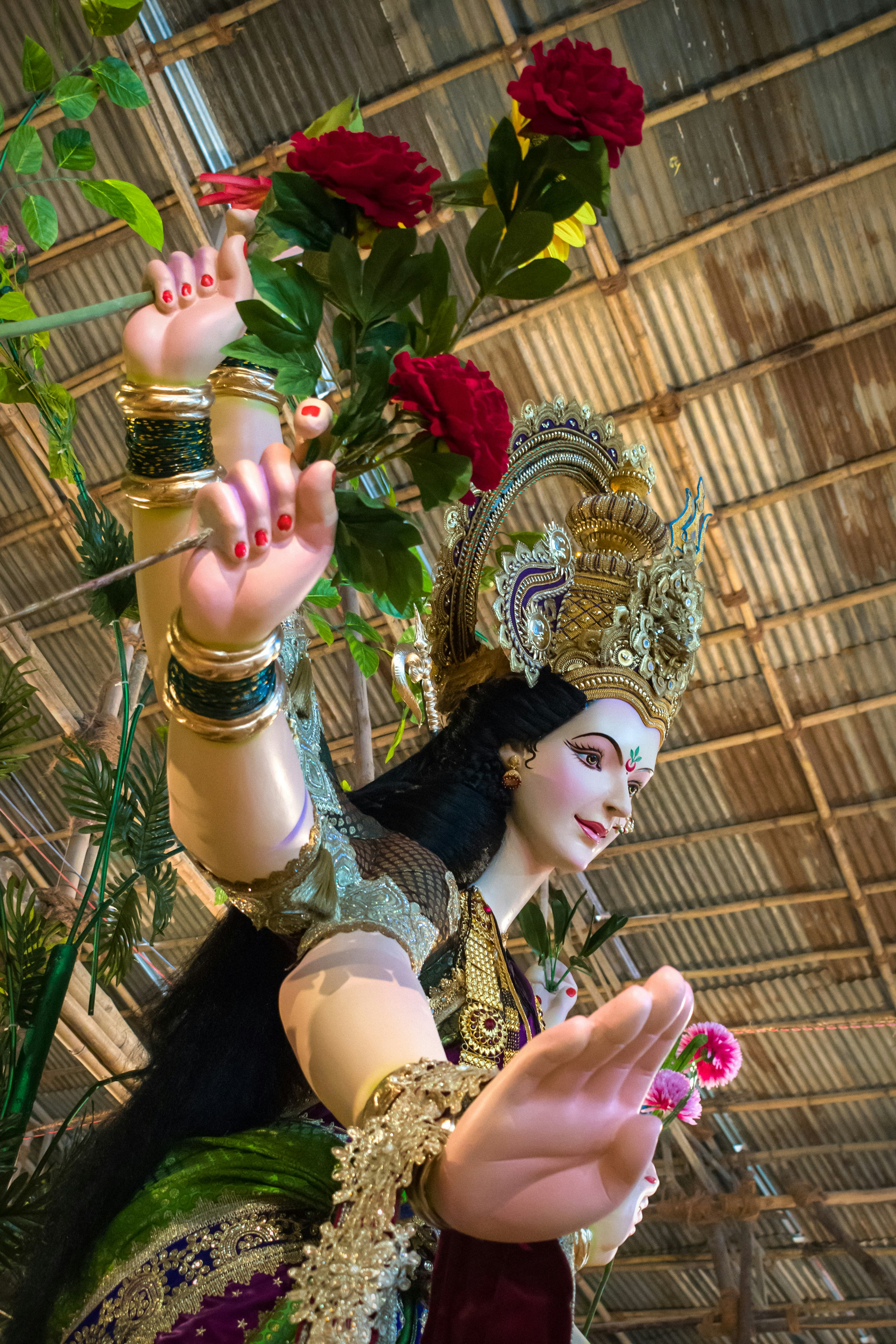As you step into the Chintamani Temple, you are immediately enveloped in a sense of tranquility and devotion. The temple’s architecture is a testament to the skilled craftsmanship of ancient times, with intricate carvings and beautiful sculptures adorning its walls. The main deity of the temple is Lord Ganesha, the remover of obstacles and the harbinger of good luck. Devotees flock to the temple to seek his blessings and offer their prayers.
Legend has it that the Chintamani Temple was built by a devout king who had a vision of Lord Ganesha. In his dream, the king was instructed to build a temple in a specific location, which he did without hesitation. It is believed that the temple was constructed in the 12th century and has since been a place of solace for those seeking spiritual guidance.
One of the unique features of the Chintamani Temple is its annual festival, known as Ganesh Chaturthi. This grand celebration takes place during the month of Bhadrapada, according to the Hindu calendar. The festival lasts for ten days and attracts thousands of devotees who come to witness the elaborate rituals and vibrant processions. The idol of Lord Ganesha is beautifully adorned with flowers and jewels, and devotees offer their prayers and seek his blessings during this auspicious time.
Aside from its religious significance, the Chintamani Temple also holds historical importance. It is said to have been a meeting place for freedom fighters during the Indian independence movement. Many prominent leaders of the time, including Mahatma Gandhi, visited the temple and sought the blessings of Lord Ganesha before embarking on their revolutionary journeys.
Surrounded by lush greenery and nestled amidst the picturesque Western Ghats, the Chintamani Temple offers a serene and peaceful retreat from the chaos of everyday life. Whether you are a devout follower of Lord Ganesha or simply seeking a moment of solace, this sacred place of worship is sure to leave a lasting impression on your heart and soul.
The legend of the Chintamani Temple dates back centuries, and its significance has only grown over time. According to the ancient scriptures, the Chintamani jewel was believed to have been lost during a fierce battle between the gods and demons. This jewel was said to possess immense power and was highly coveted by both sides.
It is said that Lord Ganesha, known for his wisdom and intelligence, took it upon himself to retrieve the precious Chintamani jewel. He embarked on a long and arduous journey, facing numerous obstacles along the way. Finally, after a relentless pursuit, Lord Ganesha succeeded in finding the jewel and brought it back to its rightful place, the Chintamani Temple.
The temple, nestled amidst the lush greenery of Maharashtra, stands as a testament to Lord Ganesha’s triumph and his unwavering devotion towards his devotees. The architecture of the temple is a marvel in itself, with its intricate carvings and sculptures that depict various mythological stories and deities. Each sculpture tells a tale of bravery, sacrifice, and divine intervention.
As one steps into the temple, a sense of awe and reverence fills the air. The main sanctum houses the idol of Lord Ganesha, resplendent in all his glory. The idol is adorned with exquisite jewels and vibrant flowers, a sight that leaves devotees mesmerized. The fragrance of incense and the rhythmic chants of prayers create an atmosphere of spirituality and devotion.
Devotees from far and wide flock to the Chintamani Temple, seeking solace and divine blessings. It is believed that praying at this sacred place can bring fulfillment to one’s desires and grant inner peace. The temple serves as a beacon of hope for those facing challenges and seeking guidance in their lives.
Visitors to the Chintamani Temple not only come to offer their prayers but also to soak in the serene ambience and bask in the spiritual energy that permeates the surroundings. The temple complex also features beautifully landscaped gardens and meditation areas, providing a tranquil space for introspection and self-reflection.
Over the years, the Chintamani Temple has become a significant pilgrimage site, attracting devotees from different walks of life. The temple’s annual festival, known as “Chintamani Utsav,” is a grand celebration that sees thousands of devotees coming together to honor Lord Ganesha and seek his blessings. The festival is marked by vibrant processions, devotional music, and cultural performances.
As the sun sets over the Chintamani Temple, casting a golden glow on its ancient walls, one cannot help but feel a sense of awe and gratitude. The temple stands as a testament to the unwavering faith of its devotees and the divine presence that resides within its hallowed halls. It continues to be a place of solace, inspiration, and spiritual awakening for all who visit.
Another significant event that takes place at the Chintamani Temple is the annual pilgrimage. Every year, devotees from different parts of the country embark on a spiritual journey to visit this sacred site. The pilgrimage is not just a physical journey, but also a deeply introspective experience.
During the pilgrimage, devotees undertake a series of rituals and practices to purify their minds and connect with the divine. They engage in meditation, recite prayers, and perform acts of selflessness and charity. The entire process is aimed at attaining spiritual enlightenment and deepening one’s relationship with God.
Along the pilgrimage route, there are several other smaller temples and holy sites that devotees visit. Each of these sites holds its own significance and is believed to possess unique spiritual energies. As pilgrims make their way from one temple to another, they are guided by experienced spiritual leaders who provide them with guidance and support.
The pilgrimage culminates at the Chintamani Temple, where devotees offer their final prayers and seek the blessings of Lord Ganesha. It is a moment of great reverence and devotion, as pilgrims reflect on their journey and express gratitude for the spiritual growth they have experienced.
After the pilgrimage, devotees often return home with a renewed sense of purpose and a deeper connection to their faith. The spiritual journey they have undertaken has not only brought them closer to God, but also helped them gain a better understanding of themselves and their place in the world.
Visiting the Chintamani Temple is not just a religious experience, but a transformative one. It is a place where people can find solace, seek guidance, and embark on a spiritual journey that has the power to change their lives.
Exploring the surroundings of the Chintamani Temple in Theur is an enriching experience for visitors. Apart from the main attraction, there are several other places of interest that showcase the beauty and historical significance of this town.
One such place that should not be missed is the Mhasoba Temple. Situated just a short distance from the Chintamani Temple, this ancient temple is dedicated to Lord Mhasoba, a revered deity worshipped by the people of Maharashtra. As visitors approach the temple, they are greeted by the soothing sounds of chirping birds and the gentle rustling of leaves. The temple is surrounded by lush greenery, creating a serene and tranquil atmosphere. Inside, devotees offer prayers and seek blessings from Lord Mhasoba, while also taking a moment to soak in the spiritual ambiance.
Another nearby attraction that captivates visitors is the Mastani Talav, a historic lake that holds a significant place in local folklore. Named after Mastani, the wife of the Peshwa ruler Bajirao, this picturesque lake is a sight to behold. Surrounded by meticulously manicured gardens, the Mastani Talav offers a perfect setting for picnics and leisurely walks. Visitors can take a stroll along the tranquil pathways that encircle the lake, enjoying the breathtaking views and the refreshing breeze that sweeps across the water.
For those with a keen interest in history, a visit to the nearby Shaniwar Wada is a must. Once the seat of the powerful Peshwa rulers, this majestic fort stands as a testament to the grandeur and opulence of the Maratha Empire. As visitors step foot inside the fort, they are transported back in time, surrounded by the remnants of a glorious era. The intricate architecture, with its ornate carvings and imposing gates, reflects the artistic brilliance of the bygone era. Exploring the various sections of the fort, visitors can learn about the intriguing history and legends associated with Shaniwar Wada.
Overall, the surroundings of the Chintamani Temple in Theur offer a diverse range of attractions that cater to different interests. Whether it is seeking spiritual solace at the Mhasoba Temple, enjoying the tranquility of the Mastani Talav, or immersing oneself in the rich history of Shaniwar Wada, there is something for everyone to explore and appreciate.
How to Reach Chintamani Temple
The Chintamani Temple is located in Theur, a serene village situated approximately 25 kilometers from Pune, the cultural capital of Maharashtra. Known for its historical and religious significance, the temple attracts devotees and tourists from all over the country.
If you are planning to visit the Chintamani Temple and wondering about the best way to reach there, you have several convenient options to choose from. Pune, being a major city, is well-connected to other parts of India by air, rail, and road.
If you are traveling by air, the nearest airport is the Pune International Airport. This airport is well-connected to major cities in India, making it easy for travelers to reach Pune. Once you have landed at the airport, you can hire a taxi or take a bus to reach Theur, where the Chintamani Temple is located. The journey from the airport to Theur takes approximately one hour, and the route offers picturesque views of the surrounding countryside.
For those who prefer to travel by train, Pune Junction is the nearest railway station to Theur. Pune Junction is a major railway station and is well-connected to various cities across India. From Pune Junction, you can hire a taxi or take a bus to reach Theur. The journey by road from Pune Junction to Theur takes around 45 minutes, depending on the traffic conditions.
If you prefer to travel by road, Theur is easily accessible from Pune via the Pune-Solapur Highway. The journey from Pune to Theur by road takes approximately one hour, depending on the traffic conditions. The route is well-maintained and offers a smooth drive, allowing you to enjoy the scenic beauty of the countryside.
Whether you choose to travel by air, train, or road, reaching the Chintamani Temple in Theur is a hassle-free experience. The peaceful surroundings and the spiritual aura of the temple make it a perfect destination for those seeking solace and divine blessings. So, plan your visit to the Chintamani Temple and immerse yourself in the spiritual vibes of this sacred place.
Enter your email to get the Latest Updated Exploring News and Topics
Discover more from atozexplore.com
Subscribe to get the latest posts sent to your email.







